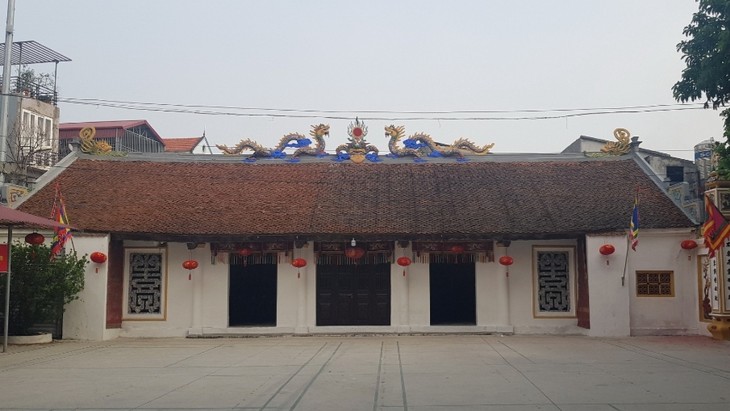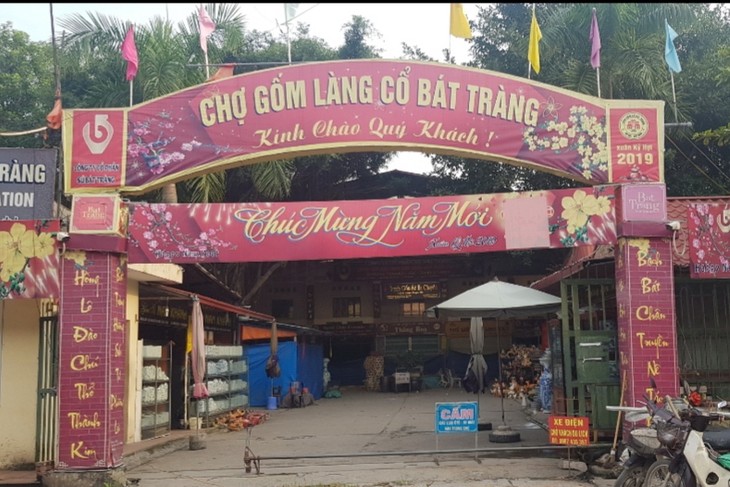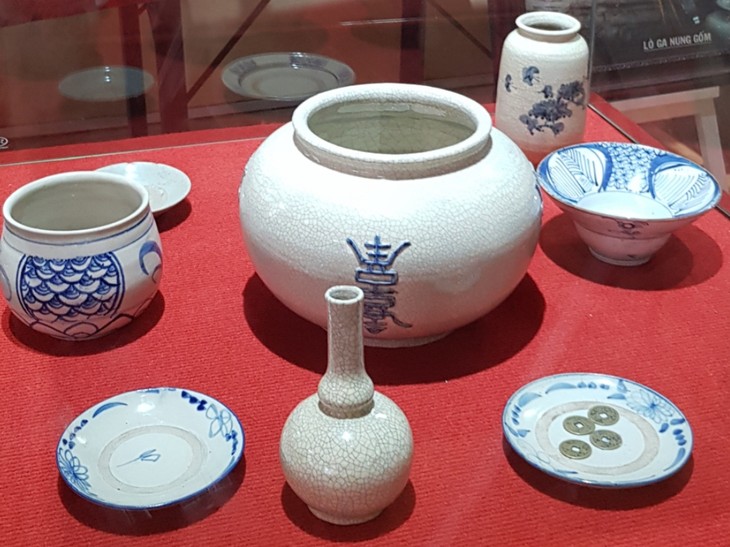(VOVWORLD) - Bat Trang commune, Gia Lam district, on the outskirts of Hanoi was recently recognized officially as a key tourist destination. The commune is known for its centuries-old pottery craft and rich history, favorable for developing traditional handicraft village tourism.
Bat Trang commune, which has 8,500 residents, is a sacred area with nine historical cultural relics, including Tieu Giao pagoda, Kim Truc pagoda, Bat Trang communal house, and the Bat Trang temple of literature.
 Giang Cao communal house in Bat Trang commune (Photo: Ngoc Anh/VOV) Giang Cao communal house in Bat Trang commune (Photo: Ngoc Anh/VOV) |
During a visit in February, 1959, President Ho Chi Minh urged Bat Trang village to become a role model for the country. Responding to the President’s call, locals have preserved their pottery craft and engaged in tourism development. The two main roads of Bat Trang village are named February 2, the day Uncle Ho visited the village, and May 19, his birthday.
Bat Trang village was the place song writer Van Cao first printed “Marching Song” – Vietnam’s national anthem.
Vu Thi Hai Yen, Chief of the Culture-Information Division of Gia Lam district, said: “Bat Trang boasts tangible and intangible cultural values. Tangible culture comprises the ancient village, ancient houses, historical and cultural relics, and pottery products. We have submitted a dossier for recognition of Bat Trang village as a national intangible cultural heritage. Intangible culture includes the festivals, cuisine, and artisans of Bat Trang village, which, I think, is an appealing destination for Vietnamese and foreign visitors.
|
 Visitors can find a wide of range of colorful pottery products at Bat Trang market. Visitors can find a wide of range of colorful pottery products at Bat Trang market.
(Photo: Ngoc Anh/VOV)
|
Bat Trang commune has two traditional pottery villages: Bat Trang and Giang Cao, with 1,000 households producing and selling pottery products to foreign markets like France, Japan, and South Korea. Bat Trang commune has 120 artisans, the most of any village in Vietnam.
Bat Trang commune celebrated its recognition by inaugurating a culture-tourism trade complex featuring selling booths, restaurants, an exhibition space for meritorious artisan To Thanh Son, and Trang An ancient house.
 A ceremony to receive the official recognition of Bat Trang as a tourist site takes place in Hanoi, October 9, 2019. (Photo: Ngoc Anh/VOV) A ceremony to receive the official recognition of Bat Trang as a tourist site takes place in Hanoi, October 9, 2019. (Photo: Ngoc Anh/VOV) |
Hoang Quoc Viet, Chairman of the Board of the Bat Trang Smart Tourism Company, said: “We provide visitors to Bat Trang with an audio guide, available in 12 languages. They are told the story of every place they visit in Bat Trang village. Audio guides have proved effective at the Hanoi Temple of Literature and Hue Imperial City.”
Nguyen Thi Minh Hanh, Chief of the Office of the Hanoi municipal Department of Tourism, told VOV: “Bat Trang pottery village and Van Phuc silk village have received long-term investment to develop full services. Our Department has worked with the US Cable News Network CNN to promote Bat Trang tourism. We have also helped to broaden the partnership between businesses and Bat Trang pottery makers to capitalize on market trends.”
 Bat Trang pottery products (Photo: Ngoc Anh/VOV) Bat Trang pottery products (Photo: Ngoc Anh/VOV) |
Bat Trang village receives 200,000 tourists per year, 20% of them foreigners. Bat Trang hopes to become the top destination for handicraft village tourism in Vietnam.